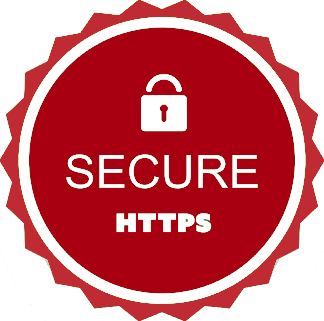In this episode, we're going to help you understand the pros and cons of the different advertising channels that are available in online media. We discuss Google Search, Facebook, Instagram, LinkedIn, Banner Display, and YouTube!
00:01:42 - Google Search
00:03:55 - FB/Insta
00:08:06 - LinkedIn
00:12:24 - Banner Display
00:15:04 - YouTube
Tags: google search, search advertising, ppc, paid search, facebook ads, instagram ads, b2b advertising, google display network, facebook, instagram, linkedin, banner display, youtube
For more on the tools and tips in this episode, please visit:
https://www.dodgeballmarketing.com/
Keep your Google Maps presence up to date with Google My Business Pro by Dodgeball Marketing. Check it out!
Dodgeball Marketing Podcast #61: Pros and Cons of Top Online Advertising Channels
Show Notes
Episode Transcript
Michael Utley: Hey everybody, this is Michael and Chris. How you doing, man?
Chris Raines: Good.
Michael Utley: Welcome, happy Friday for us. Welcome to episode 61 of the Dodgeball Marketing Podcast, really glad you're here. Please take a moment and subscribe or follow us. We're on @DodgeballSEO on Facebook, Twitter, YouTube, LinkedIn, and we love the questions that come in and appreciate all of the mentions of the podcast that I get in meetings when I'm talking to new clients, really appreciate that. We put a lot of effort into producing this content, and the whole universe is just saturated in content. We're not special, but it's nice to be told thank you for producing this.
Chris Raines: Yeah.
Michael Utley: And thank you to you, Chris. Thanks for doing this. We're at episode 61. I don't know, I might have said 60 before.
Chris Raines: I think 61, you said 61.
Michael Utley: 61, okay, good, of our second podcast together, this one having been the replacement for a previous audio version. So I'm excited about today's. I gave a little bit more preamble because I'm excited about today's format. I'm going to interview you. You have a media company that used to be video production, and you found video is getting used a lot in ads, and you ended up migrating and becoming a full ad management shop with Bullhorn Media, and video being more of a supporting content element and not doing the video production, but focusing on ads. So I'm going to interview you and we're going to understand the pros and cons today of the different advertising channels that are available in not so much traditional media or offline media, but the biggest categories and brands around online media.
Chris Raines: Right.
Michael Utley: Search and social.
Chris Raines: Digital ads, yeah.
Michael Utley: Digital ads. So let's get started. What are the pros and cons of Google search?
Chris Raines: Google search. So let's go over some pros and cons of Google search. It's probably one of the oldest advertising channels on the Internet besides maybe just people selling individual banner slots on their websites.
Michael Utley: Yeah, yeah, totally.
Chris Raines: Google search has been around since the early 2000s, or maybe the late 1990s. But obviously the pro of Google search ad, and this goes for Bing or any other search engines, is there's such high intent. You really, if you're a divorce lawyer in Minneapolis, you really want to be in front of someone that types, "Minneapolis divorce lawyers."
Michael Utley: Right.
Chris Raines: Right?
Michael Utley: Yeah.
Chris Raines: Because they're absolutely ready to talk to you. They're going through a divorce in the short term and they need your services.
Michael Utley: Yeah.
Chris Raines: So high intent is by far the biggest pro to search advertising. You're only getting in front of people at the exact moment where they're thinking about your services and they need you.
Michael Utley: They have all the characteristics that qualify someone.
Chris Raines: Yes.
Michael Utley: Timing.
Chris Raines: They're giving you, they're showing you their desires through the search query.
Michael Utley: Yeah.
Chris Raines: Red shoes for women. Boom.
Michael Utley: Yeah.
Chris Raines: They're looking for red shoes, well, here we go.
Michael Utley: Yeah.
Chris Raines: So that's by far the biggest pro. Biggest con is it's just more expensive. And why is that true, Michael? Because every other divorce lawyer ...
Michael Utley: Because everybody wants to reach somebody with high intent.
Chris Raines: There's only three slots up there and there are, you know, 20 divorce lawyers in Minneapolis. So it's an auction system, and so the bid goes up and up and up. And so eventually you're paying $40 to $50 a click maybe for a query like that, maybe.
Michael Utley: $40 to $50 a click.
Chris Raines: I don't know exactly. I do know-
Michael Utley: Well, I know rack servers have traditionally been $20 to $50. So yeah.
Chris Raines: I do know some of the highest of injury lawyer. So I think injury lawyer, either LA, or injury lawyer in one of the San Francisco, maybe it's ...
Michael Utley: Getting into $100 a click?
Chris Raines: $100+ a click.
Michael Utley: Yeah.
Chris Raines: To get one click from there, because the payoff is so high if you get a large settlement. So that's the con. You're in front of people that really need your services right then, but in turn you're going to pay more, a lot more in some cases, for the click. So that's Google search.
Michael Utley: That's good. Good, I'm just interviewing you this episode, usually we take turns. But Facebook is another big ad platform. In the past we used to use the phrase PPC to refer to search engines, but really PPC also applies to Facebook. And Facebook bought Instagram, and Instagram's part of that same ad platform. So give us a little rundown here. If I've got money to spend and I'm looking at Google, or maybe I'm looking at Facebook, why would I go to Facebook or Instagram, and what are the pros and cons over on that side?
Chris Raines: Yeah, so Facebook and Instagram, one of the big pros I think is the creative, what the user sees, is much more dynamic. You can have images, you can have video, you can have swipeable carousels. You can really, especially if you're something that's more visual and that you can show that transformation inside of your ads. So the creative itself, it gives you just a lot more options. And there's also a sort of discovery mode that people carry with them onto platforms like Facebook or Instagram. What I mean by that is, people get on to do the scrolling, right, to go through the news feed. Their mindset is, "I wonder what I can discover today." It's more of a discovery mode. So they're more friendly to ads in that way, because their mind is open.
Michael Utley: It's a little bit of a softer mode to be interacting in.
Chris Raines: Right. It's different than, say, if you're researching cures for allergies. You're in research mode. You don't want to see ads when you're in that mode.
Michael Utley: So search engines are almost, it's kind of like a search and destroy. Like you've got an objective, you've got a mission, you're going straight to it. But with social media it's a little bit more ambient.
Chris Raines: Right. And the third pro that I can think of is, if you sell a product that is brand new to the marketplace, doesn't have a category, doesn't have a lot of search volume, you need platforms like this to push it out. Michael, we've advertised before working with your company for a client that sells underarm sweat reduction procedures.
Michael Utley: Yes, yes.
Chris Raines: So a lot of times people don't know that this exists. It's a brand new procedure, a brand new product. So in that case you really need platforms to push it out because you're not going to pull that in with search volume, because people don't know that it exists. And you can name a lot of other examples for brand new products.
Michael Utley: Yeah, absolutely, yeah.
Chris Raines: I saw an ad the other day for these blankets, these fire repellent blankets.
Michael Utley: Oh, yeah.
Chris Raines: So if your stove catches on fire ...
Michael Utley: You just pull it over, yeah.
Chris Raines: You pull it over. I didn't know that existed.
Michael Utley: Yeah.
Chris Raines: There's no way I would have searched for fire repellent blanket for households.
Michael Utley: So let's talk about cons. There's no direct search intent, like search. So you're going to be pushing things in front of people that a lot of them aren't going to want what you have to sell. So it's a little softer in both the pros and the cons and creates just a little bit of a different engagement.
Chris Raines: Right. You need to update the creative more often. Depending on how much you're spending, if you're spending a lot of money per day, you're going to need to rotate ad creative sometimes weekly.
Michael Utley: Interesting. Okay, I hadn't heard that, that's a good idea.
Chris Raines: Probably monthly most of the time. Most of my social campaigns, we're updating the creative at least once a month.
Michael Utley: Okay.
Chris Raines: And so you need that because you're going to serve the same ad to the same people over and over again and they're going to develop blindness to it. And then thirdly I'll say under cons is, since Apple released its iOS 14 update back in, I think whatever, March of this year, that update allows people to opt-out of website tracking. So what that means for us, the advertisers is a lot of times we can't tell when people convert on the website. So we might be pushing them to make a phone call or to fill out a form. If that person has opted out of tracking, many times that data gets lost. And so we have to fly in the dark a little bit. So that's been a big issue for advertisers. So that's a con that's a more recent con in terms of advertising on Facebook and Instagram, something to keep in mind.
Michael Utley: Yeah. Yeah, the universe outside of Facebook is changing, and so it's changing the relationship of advertisers to that platform and that tool. Good. Let's talk about the next one. So Chris, what are the pros and cons of advertising on LinkedIn? Now, a lot of people are producing content and doing a lot with LinkedIn separate from advertising. We're really focused in here on advertising.
Chris Raines: Yeah.
Michael Utley: So if I'm an advertiser and maybe I've got the hunch that LinkedIn is something I would think about, why would I do that? What are the things that are unique to LinkedIn? It's really different than Facebook, for example, but what would take me to advertise on LinkedIn?
Chris Raines: Yeah, so LinkedIn is different. LinkedIn is an exciting platform for some advertisers, and it's different in two key ways, I think. One, it's different in its targeting capabilities. People give you the company that they work for and their job title and their industry. Facebook has to cobble together that data based on other factors.
Michael Utley: Okay.
Chris Raines: LinkedIn, people just fill out their profile. So if you're a B2B advertiser, that's really powerful if you want to get in front of a marketing manager, if you want to get in front of purchasing agents, if you want to get in front of chief medical officers, whatever. That's really powerful, you can target those people directly. Secondly, the second key difference is that people carry with them a more business mindset. People go in there to talk about business, talk about industry related things in a way that they don't really do on Facebook and Instagram.
Michael Utley: So there's a modality with the users.
Chris Raines: They're ready to hear. So if you're selling healthcare IT services and you advertise that on LinkedIn, your chief technical officer, technology officer for healthcare, they're in that modality on LinkedIn. They're looking to learn, looking to consume information. So they're going to be more receptive to your offer on LinkedIn.
Michael Utley: Right.
Chris Raines: And so those are all the pros, so those are really great pros. If you're doing B2B advertising, you're really caring about reaching people in a specific industry, specific company, specific job title, imagine being able to advertise to everyone at IBM.
Michael Utley: Yeah.
Chris Raines: You can do that.
Michael Utley: Yeah.
Chris Raines: So let's talk about cons. It's a lot more expensive cost per click than somewhere like Instagram.
Michael Utley: Yeah.
Chris Raines: And part of that, a big part of that is because LinkedIn intentionally limits their inventory.
Michael Utley: Okay.
Chris Raines: So we're talking cost per thousands, or CPMs. A place like Facebook has a lot of different place- They show ads more often and there's more placements for it. So you have Instagram stories, the Instagram feed, the audience networks, all these other placements. So the inventory is a lot higher. LinkedIn intentionally limits their inventory. And so what happens is you've got more advertisers competing for less inventory so your CPMs go up.
Michael Utley: LinkedIn's maybe protecting that user experience at the expense of revenue.
Chris Raines: Right.
Michael Utley: Yeah, okay, good to know.
Chris Raines: And so you might see CPMs, I've seen CPMs on LinkedIn as high as $60 to $70 for really high if you're targeting, say, anybody with a C in front of their name, so the C-suite. A lot of other people trying to target those people and the inventory's low, so your cost per click is going to be higher. I would recommend LinkedIn for people that have a higher ticket service.
Michael Utley: Okay.
Chris Raines: So you don't want to go to LinkedIn and advertise a $47 course.
Michael Utley: Yeah.
Chris Raines: It's not going to work out for you.
Michael Utley: Yeah.
Chris Raines: You're going to have to have an insanely high conversion rate for that to happen.
Michael Utley: Yeah.
Chris Raines: But if you're doing high ticket B2B services, it can be really powerful.
Michael Utley: Yeah. So that's great. So that's LinkedIn, and yeah, LinkedIn's been around for a long time. I know it was sold to Microsoft.
Chris Raines: 2005, maybe.
Michael Utley: Yeah, and sold to Microsoft, and it seems that it took them a little bit longer to get into advertising, but then once they did, they didn't go crazy with it. They said, "Oh, okay, this is a good machine here for advertising."
Chris Raines: They've been really slow to roll it out. And I think that's a good decision. It creates a lot of stickiness and it makes their organic reach, it makes it a more pleasing platform. So even as an advertiser I think they're going about it the right way.
Michael Utley: Yeah. I saw an article this week, just saw the headline, that the reason Google's successful is it's the default search engine. And I think the article, intuiting that where they were going was, the word default was the key. I think LinkedIn is the default resume storage device.
Chris Raines: And work-related interaction platform.
Michael Utley: Yeah. Yeah, are there any other? I don't know of any other ones.
Chris Raines: That's really it, yeah.
Michael Utley: Yeah. All right. Good, next up let's talk about banner display advertising. This is a category of advertising that we might think of old school, but guess what? It's not dead. It's still out there. Chris, tell us about banner display. What are the pros and cons, how does it work in your universe?
Chris Raines: Banner display of course is slots that you can advertise on other people's websites.
Michael Utley: Yeah. And these would be visual.
Chris Raines: Visual ads on other people's websites. So the pros are, there's tons of reach and almost unlimited inventory.
Michael Utley: Ah, okay.
Chris Raines: So think of how many websites there are that are in ...
Michael Utley: All of them.
Chris Raines: Google display network.
Michael Utley: All the websites, yeah. Millions.
Chris Raines: So many websites are advertising supported. So the inventory's almost unlimited. And so your CPMs and your cost per click is going to be a lot lower. And that's one of the reasons why. So you're going to be able to reach a ton of people with impressions, and your cost per click is typically, if LinkedIn cost per click is $5-ish, then banner display can be anywhere from $1 on the high end to sometimes 20 cents, 15 cents a click on the low end. So cost per click and CPM and tons of reach and inventory, pros. Cons, banner blindness. People don't have the, back to the example of doing research for allergy prevention, people don't want, they're going to scroll right past your ads in the allergy prevention article.
Chris Raines: They're not in the mindset of discovering new things. They know exactly what they want to look at. It's on the page, and the ads are more secondary to them. So it's going to be harder to get people to look at your ad, consume it, and click through to your website. And the other con is, a lot of people have a mismatch when they're doing display advertising and they mismatch the sort of temperature of the audience and the temperature of what they're asking them to do.
Michael Utley: Oh, yeah, yeah, yeah. So asking for hand in marriage on the first date, right?
Chris Raines: Yeah. So the temperature is really low for the audience. So if they do click on the ad, they're not really highly committal. So you're going to have a bad time if you're asking for an appointment or something.
Michael Utley: So this is the other end of the spectrum from Google search.
Chris Raines: Exactly.
Michael Utley: Where somebody's doing, "Divorce lawyer LA" and they're really keyed up around the topic.
Chris Raines: So if the lawyer, the divorce lawyer, wanted to do Google display, they might want to think about something like a downloadable resource, how to not lose your shirt in a divorce.
Michael Utley: Yeah.
Chris Raines: In a divorce, how to save yourself, if you're a high net worth individual, how to save yourself millions and don't get hosed by your spouse in a divorce.
Michael Utley: Yeah.
Chris Raines: Downloadable. Now, that would probably do decent on Google display.
Michael Utley: Wow.
Chris Raines: Or display, banner display.
Michael Utley: Next up, let's finish up the episode with this one, a big advertising network and one that we've used quite a bit is YouTube. How do you see advertising on YouTube?
Chris Raines: YouTube, so pros of YouTube, same as banner advertising. Tons of reach and almost unlimited inventory. How many new videos get uploaded every day? The inventory's almost unlimited. And it's also intent based and keyword based in the same way that Google search is.
Michael Utley: Yeah. Yeah, that's right. We think of it, we should really think of YouTube as a search engine.
Chris Raines: So think about if you're selling a course for Ruby on Rails, a $200 course or something.
Michael Utley: Yeah, or learning how to fly.
Chris Raines: You can get in front of- Or learning how to fly. You can get in front of people on YouTube searching for various Ruby on Rails things. And at that exact moment of time when their intent to learn is high, you can get in front of them with your ad on your $200 Ruby on Rails course. So that intent base is still there in a way that it's not there on social, right?
Michael Utley: Right. It's not really discovery mode. They're going out there doing a search, and certain content is coming back in that search.
Chris Raines: The other thing I'll say is, Google's built in in-market, what they call in-market audiences, are a lot more powerful than something like Facebook, which really doesn't have that. Google can look at your website visits and your search queries and know that you're, for instance, in market for car insurance, in market for different goods and services. So you can really get in front of people that not only are the right person but have the right modality of what they want at that time with in market audiences. So that's really powerful. Cons, getting people off of YouTube is difficult because they're there to watch a video. So click-through rate's going to be lower. And because of that, you need to really dial in your ad creative to give them something compelling. So think about if you're on YouTube and you're going to watch the latest Beyonce video, I don't know, you want to consume the content you're there for.
Michael Utley: Yeah.
Chris Raines: It takes a really high and compelling offer.
Michael Utley: Maybe an ad for Bonnaroo.
Chris Raines: Yeah, something like that.
Michael Utley: Yeah.
Chris Raines: But it takes a really-
Michael Utley: Local, relevant to music fans.
Chris Raines: Exactly. It takes a really compelling offer to get them off the platform. So you have to dial in your creative that way, and you have to dial in your creative, especially if you're doing skippable Pre-roll, that first five seconds where it goes, "Five, four, three, two, one" on the bottom, right, you have to really push past people's tendency to look at that, "Five, four, three, two, one" and hit skip. So that first five seconds has to be pre-loaded in a way that really the other platform like Facebook, you don't have to do it as much. You do have to do it, but that skippability is key. So those are the cons of YouTube.
Michael Utley: So you have to essentially, if you're going to use it, be undeniable to a degree.
Chris Raines: Yes, exactly.
Michael Utley: Great. This is great. This has been episode 61, pros and cons of top online advertising channels. Chris, thanks for letting us tap into your expertise today. Check us out on all the socials for Dodgeball Marketing or go to dodgeballmarketing.com and connect with us. Or yeah, just give us a call. And that's it, we'll see you on the next one. Later, thanks everybody.
We Are the Digital Marketing Pros
Work with a great team of passionate, experienced professionals.








 Google Podcasts
Google Podcasts
 Spotify
Spotify
 YouTube
YouTube
 RSS
RSS
 Libsyn
Libsyn
